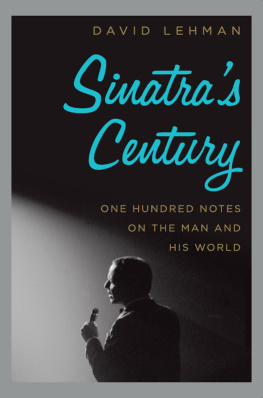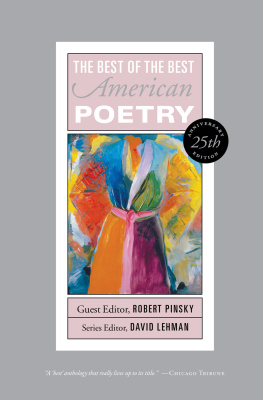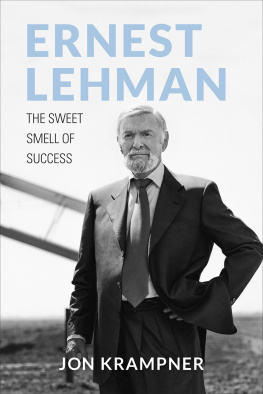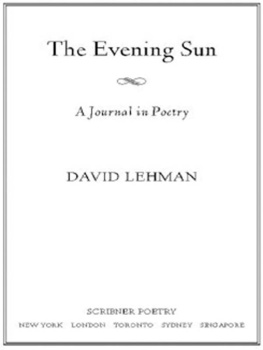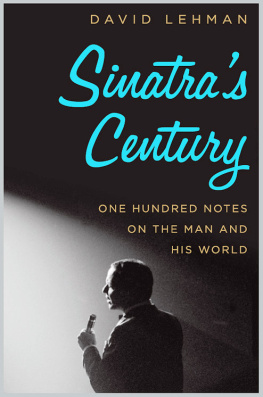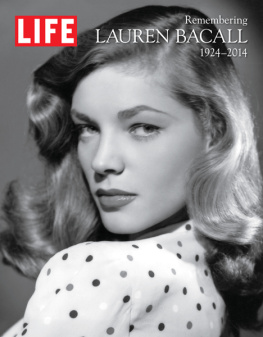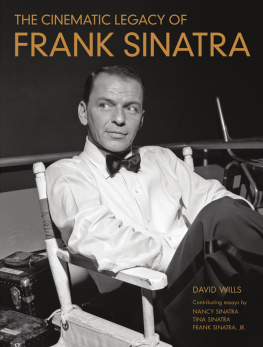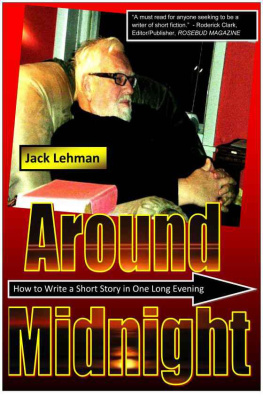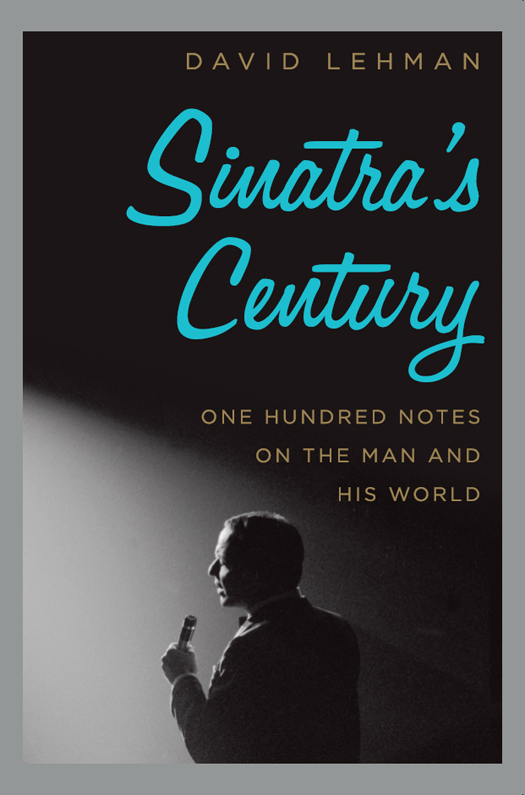Cover design by Jarrod Taylor
Cover photograph: John Dominis/Getty Images (front); Phil Stern Estate; courtesy, Fahey/Klein Gallery, Los Angeles (back)
CONTENTS
Guide
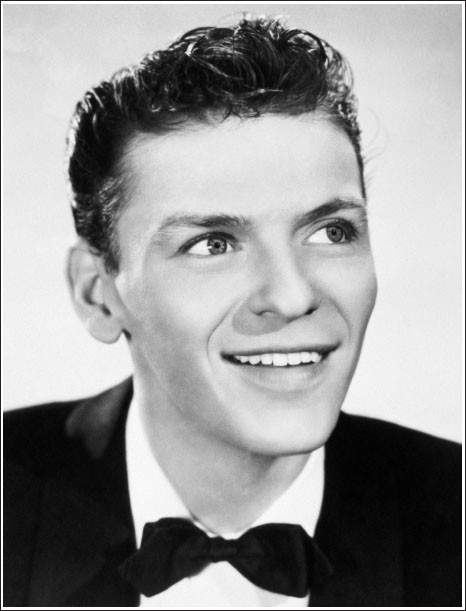
CORBIS
For Amy Gerstler
DECEMBER 12 (1997)
Theres an old French saying,
the whole of a mans mystery
rests in his hat, and if you
translate it into American
you get Sinatra smoking
and singing Memories of
You, I Thought About You,
You Make Me Feel So Young,
and You Brought a New
Kind of Love to Me, all
from the same 1956 session,
I love that voice and have since
the summer I was eight and
my friend Ann and I sang Love
and Marriage on Talent Night
at the bungalow colony when Im
down theres nothing like you,
birthday boy, singing All of Me
to lift me up and when Im in love
I jump out of bed in the morning
singing It All Depends On You and
your voice comes out of my mouth
May you live to be a hundred,
and may the last voice you hear be mine.
F S
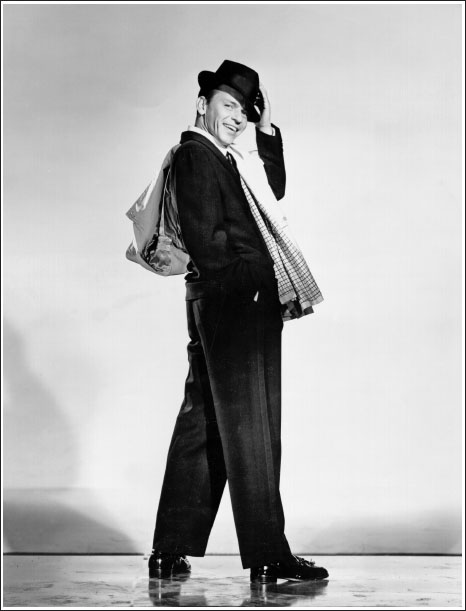
Michael Ochs Archives / Getty Images
AT ZITOS BAKERY on Bleecker Street, a Greenwich Village landmark for eighty years before it closed its doors in 2004, customers saw two framed photographs on the wall behind the counter. One was a picture of the pope. The other was a picture of Frank Sinatra.
DIRECTLY AFTER EVERY baseball game at Yankee Stadium, the public address system plays Sinatras signature recording of Kander and Ebbs New York, New York. When the Yankees defeated the Atlanta Braves in the sixth and final game of the 1996 World Series, capping an improbable comeback from a two-games-to-none deficit, it seemed as if everyone in the stadium was singing along, swelling the final chorus: And if I can make it there, I can make it anywhere / Its up to you, New York, New York. The aging Sinatrahe was in his sixties when he recorded New York, New York, the last of his blockbuster hitsdoes amazing things with that initial And, twisting and turning the word as if it contained not one but three or four syllables; the voice seems to go down a valley and come back up the other side of a hill. The gesture is inimitable, though it also invites imitation, and watching a Sinatra fan trying to duplicate the effect can be very entertaining. But here the voice was the instrument of joyous release. Here you had a crowd of almost sixty thousand people getting into the act. It was a great moment of New York solidarity, and it was also, in its way, an expression of Frankophilia: the populaces love affair with the greatest of all popular American singers.
Triumphal, assertive, and endowed with civic pride, the hymn to the city that doesnt sleep is New Yorks official song. John Kander and Fred Ebb, who had previously given us the score of Cabaret, wrote New York, New York for Liza Minnelli to belt out in Martin Scorseses 1977 movie of the same title, with Minnelli as a vocalist on the rise and Robert De Niro as the saxophone player she meets in a New York nightclub on V-J Day in 1945. Once upon a decade, the Yankees played Minnellis rendition of New York, New York after a loss and Sinatras after a win. Liza protested and now, win or lose, it is Franks version that you hear after every game at Yankee Stadium.
The song has become the citys anthem. There was always competition for the distinction; New York is, after all, the home of Tin Pan Alley, Broadway, and some of the countrys most celebrated cabarets, clubs, and performance spaces. The Sidewalks of New York was the citys early-century anthem, played by the band at the end of Sunrise at Campobello when a polio-stricken Franklin Roosevelt makes his way to the lectern to nominate Alfred E. Smith at the 1924 Democratic National Convention. Manhattan, Rodgers and Harts breakout hit, caused a sensation when the first audience heard it at the Garrick Gaieties of 1925. Harts sophisticated and witty lyricin which pleasures are praised according to their affordabilitysalutes not only Chinatowns Mott Street and Central Park but the Bronx, Staten Island, Coney Island (where well eat baloney sandwiches), and even Yonkers (where true love conquers all). Before Kander and Ebb, Leonard Bernstein wrote a song called New York, New York, with lyrics by Betty Comden and Adolph Green, for On the Town (1944). The song kicks off the story with a madcap burst of energy: three U. S. sailors are on shore leave for twenty-four romantic hours in a helluva town (the original Broadway show) or a wonderful town (Hollywoods rephrasing)a place where people ride in a hole in the ground, though even in the subway you will see women decked out in silk and satin and everyones up for a date. There are other wonderful songs that glorify one aspect or another of the city: Take the A Train, Lullaby of Broadway, Lullaby of Birdland, Manhattan Serenade. But as a theme that doubles as a fight song, Kander and Ebbs New York, New York is top of the list, king of the hill, and it is the Sinatra version that defines the way New Yorkers see themselves and their beloved, if sometimes embattled, city.
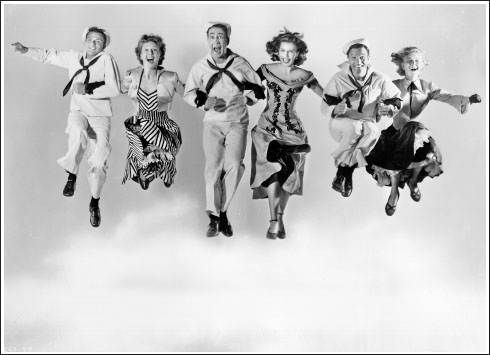
With the cast of On The Town.
Michael Ochs Archives / Getty Images
Few menand fewer nonathletesknow what it feels like to bring sixty thousand cheering people to their feet. Sinatra had that power. It was (and still is) his voice that thousands of men hear coming out of their mouths in the shower. At Columbia Lions basketball games, the college band plays Roar, Lion, Roar at regular intervals, but when the game against Harvard or Princeton has ended and the Ivy League crowd heads toward the exits, the familiar voice comes over the loudspeaker and starts spreadin the news. At Chicagos United Center, where the Bulls of Michael Jordan held court, and which Sinatra officially opened with one of his last live concerts, it is My Kind of Town that is playedthe song Jimmy Van Heusen and Sammy Cahn wrote to order for their bosss last singing picture, Robin and the Seven Hoods in 1964. In the Chicago Cubs venerable Wrigley Field, it is Chicago (That Toddlin Town) that you may sometimes hear between innings or after the game. In each case it is not just the song itself, but Sinatras rendition, that is accepted as definitive.
ON DECEMBER 12, 2015, Frank Sinatra turns one hundred. Fans need no reason beyond the occasion for a songfestor a Festschriftbut there are a number of serious arguments I would put forward in the course of a celebration.
The first is that Sinatra continues to figure in at least three aesthetic realms: as a singer, as a movie actor and movie star, and as an almost mythic personage about whom hundreds of thousands of words have been written. There remains something new to be said about Sinatras singular claim on our attentionhis image, an image that evolved so extraordinarily in the course of his career. To an aficionado, and there are plenty, Sinatra, as he would be taken, a man and his music, is an aesthetic experience of intense pleasure, which grows only greater when shared among friends.

